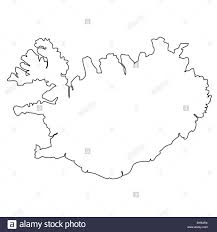Outline versus discover. Execute versus imagine. Planner versus “pantser” (short for “seat of the pants”); all of these are ways of saying that some writers diligently outline their work before they write it down, and some plunge into prose on the page and see where the story leads them.
I have to be different, so I do both.
(“Whaaat?”)
I usually know the ending before I start writing. Until very recently I would have said I always knew the ending before I started, but I just submitted something where, for the early parts of the story, I had no idea how it was going to resolve. I had something in my head like “Working together, they beat the bad guy.” (Newsflash; that’s not “knowing the ending.”)
Usually I write what I call a “discovery draft” when I want to be fancy, or a “zero draft” (as in, “so rudimentary it’s not even a first draft”) if I’m being honest. I (almost) always have a character in mind, and as I said, the ending. Or a reasonable facsimile thereof. I write it to see what happens.Then I have to turn that morass of scenes and ideas into a coherent story, preferably with a plot. I still don’t turn to anything resembling an outline at this point to begin with, but while I’m working on this point I start to realize that I need a way to maintain the shape of the story at a basic level. How long are the chapters? Is the story broken up into parts of sections that are larger than chapters? This is when I make an outline, and it’s a chapter outline.
I create a table that has the chapter number, starting and ending page numbers and a brief statement of what happens in the chapter. This tells me some things right away. In the piece I’m working on now, I have one chapter that is disproportionately short. That will need to get fixed.
The one or two-liner about what happens is helpful too, although it can be misleading. If, however, I have a fifteen-page chapter and my one-sentence summary is “We meet the cook and the housemaid,” then I may have a problem. (I may not, if the cook and the housemaid are vital characters, but you get the drift.) If my eight-page chapter has seven things worthy of note, then probably things are rushed there.
My friend Margaret has a novel that takes place over a middle-school academic year. She did a variation of this. She made a “day runner” for her main character. She used the in-story-timeline. For example, the page marked September 10 might say, “Jamie goes to the new school and is introduced to her teachers.” September 13th might say, “Jamie meets Brad the bully.” This works roughly the same way my outline works, especially when she has to plot jumps in time. “Jamie goes to class. Jamie goes to dance class. Jamie does homework,” might tell the writer that this can be summarized into “Over the next few weeks Jamie settled in. She got used to doing homework again and she loved her dance class.” Or, if Bully Brad is dogging Jamie’s steps at every turn, then drawing out those activities may be useful.
This is all about giving the writer a way to see the work and a way to plan the work.
I say I don’t outline, but that doesn’t mean I don’t write about the work in ways that will never show up in the prose. I’m the first one to sit down at a writing session and start with, “Why wouldn’t the villain just call Mortimer and ask him what happened? How does Narcissa know about the illicit drug trade when she’s clear across town? Wait– what if she used to date Mortimer? Eww, no. Narcissa used to babysit Mortimer’s kids, and that’s how she knows!” I do hope my actual plotting is better than that.
The chapter outline helps in other ways too. Specifically, it helps me get the chapter numbers right. I’m great for having three Chapter Threes and no Chapter Nine. Embarrassing as this is, I forget things about my characters, too, like what color eyes they have. In the portal fantasy I worked on last year, a secondary character was restoring an antique car. He painted it specific color, and that color was either a dark teal green or burgundy. I changed it along the way and now I never remember. I put that in the chapter notes for the chapter where see him working on the car. (It’s teal.)
I’m of the “whatever works” school of writing, but when it comes to Outline vs Discover, I think I’d call myself a pantser with a backup plan.



